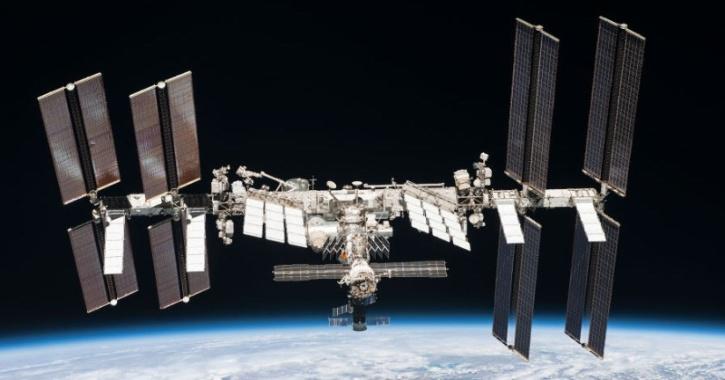China launched Gaofen-14, an optical satellite, onboard the Long March 3B carrier rocket on Sunday 11:58 am from Xichang Satellite Launch Center in SW China’s Sichuan Province.


China launched Gaofen-14, an optical satellite, onboard the Long March 3B carrier rocket on Sunday 11:58 am from Xichang Satellite Launch Center in SW China’s Sichuan Province.


Cosmochemist and geochemist Ouyang Ziyuan 欧阳自远 from the Chinese Academy of Sciences who is now in charge of the Chinese Lunar Exploration Program has already stated on many occasions that one of the main goals of the program would be the mining of helium-3, from which operation “each year, three space shuttle missions could bring enough fuel for all human beings across the world.”
The Chang’e-5 probe, comprising an orbiter, a lander, an ascender and a returner, was launched on Nov. 24, and its lander-ascender combination touched down on the north of the Mons Rumker in Oceanus Procellarum, also known as the Ocean of Storms, on the near side of the moon on Dec. 1. After the samples were collected and sealed, the ascender of Chang’e-5 took off from the lunar surface on Dec. 3. Next, the orbiter-returner will separate from the ascender, and wait for the right time to return to Earth.
12-8-20 The ascender of China’s Chang’e-5 lunar probe carried out deorbiting on Tuesday at 6:59 am and landed on the preset landing area on the moon’s surface at 7:30 am in a controlled manner.
12-16-20 ChangE5 orbiter-returner combo successfully conducted second course correction at the moon-Earth transfer orbit on Wed 9:15 am.
12-17-20 Carrying around 2 kilograms of lunar samples, China’s Change5 lunar probe safely landed in the designated area in North China at 1:59 am on Thursday, bringing the craft’s epic round trip between Earth and Moon.
Chang’e-7 and -8 missions will involve inviting relevant countries and agencies to work together to study the feasibility of building a permanent moon base.
The CNSA and scientists are mulling over launching Chang’e-6 sample return mission during China’s 14th Five-Year Plan (2021-25); the landing site could be the lunar south pole or far side of the Earth’s natural satellite.


Space station by China, Tiangong (Heavenly Palace) is expected to be operational by 2022. China is partnering with multiple nations, many of which are already partners of the US on the International Space Station, for conducting scientific experiments onboard Tiangong. These countries include France, Germany, Japan and even developing nations like Kenya and Peru.
“China is rapidly building what they call the ‘Chinese International Space Station,’ and they’re rapidly marketing that space station to all of our international partners,” said NASA chief Jim Bridenstine. “It would be a tragedy, if, after all of his time, and all of this effort, we were to abandon low Earth orbit and cede that territory.”
Bridenstine mentioned the US’ necessity in maintaining the position. He suggested that funds to NASA can eventually be used to pay companies to set up a space station. NASA would then act as “one of several customers” and hence will have a presence in the low-Earth orbit at a much lower cost.
He stressed that this was vital to “ultimately not cede that territory to another country that doesn’t have our interests at heart.”



A Chinese Long March-4B carrier rocket carrying two environmental monitoring satellites was launched from Taiyuan Satellite Launch Center in north China’s Shanxi Province at 11:23 a.m. Sunday.

China successfully sent the Gaofen-9 04 高分九号04星 high-resolution satellite into orbit on Thursday. Launched by a Long March-2D rocket, the satellite will be used for land survey, city planning, land rights confirmation, disaster prevention and mitigation, among other tasks.
8月6日12时01分,我国在酒泉卫星发射中心用长征二号丁运载火箭,成功将高分九号04星送入预定轨道,发射获得圆满成功。
据了解,这次任务还搭载发射了清华科学卫星。
高分九号04星是一颗光学遥感卫星,地面像元分辨率最高可达亚米级,主要用于国土普查、城市规划、土地确权、路网设计、农作物估产和防灾减灾等领域,可为“一带一路”建设等提供信息保障。
搭载发射的清华科学卫星由清华大学负责研制,将在轨对重力卫星系统设计方法、基于双频GPS的精密轨道大气密度测量方法等理论与技术进行飞行验证。
这次任务是长征系列运载火箭的第342次飞行。

The Space X Starship SN5 prototype completed its first ever 150-meter-high test flight in South Texas, US, on Wed. “Mars is looking real” Elon Musk tweeted after the flight. Looks like a fake, a large empty shell powered by a single engine, it is not carrying any weight.
NASA confirmed that Perseverance slipped into “safe mode” due to an unexpected temperature difference.
“Data indicate the spacecraft had entered a state known as safe mode, likely because a part of the spacecraft was a little colder than expected while Mars 2020 was in Earth’s shadow,” NASA officials said in a statement. “All temperatures are now nominal and the spacecraft is out of Earth’s shadow.”
China sent a new high-resolution mapping satellite into space on Saturday from the Taiyuan Satellite Launch Center in the northern province of Shanxi.
The Ziyuan III 03 资源三号 satellite was launched by a Long March-4B rocket at 11:13 a.m. Beijing time, according to the center. It was the 341st flight mission by the Long March rocket series.
Also on board the rocket were two satellites used for dark matter detection and commercial data acquisition respectively. They were developed by the Shanghai ASES Spaceflight Technology Co. Ltd.
All three satellites have entered preset orbits